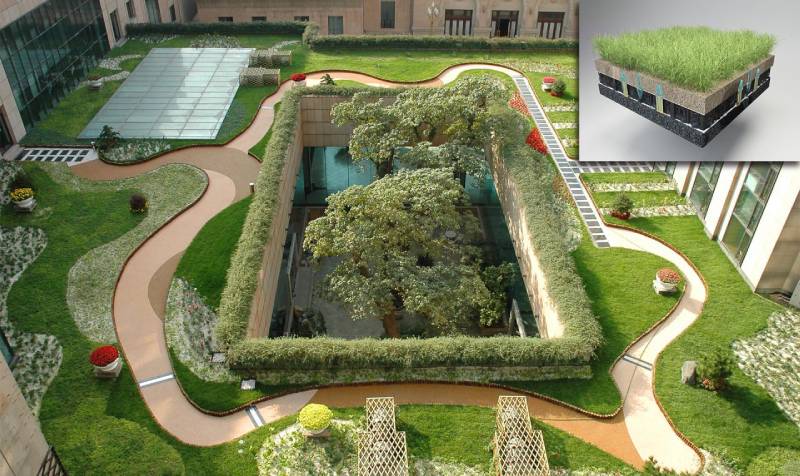
A new way for owning a green roof with passive irrigation system
- Lifestyle
- December 5, 2022
Nowadays, green roofs are very popular among communities. They have aesthetics functionality. However, it is not that simple to own a green roof. In many cities, a permit is required for building a green roof. Applicants may need to submit a maintenance plan. Therefore, it requires extra work for owning a green roof. Irrigation is part of the maintenance work. So, a passive irrigation system becomes an absolute advantage for irrigation process.
Methods of irrigation:
Currently, sprinkler irrigation and drip irrigation are the most common water-saving irrigation methods that can greatly reduce evaporation and leakage of irrigation water through the use of pipes.
Sprinklers use pressurized water, so the water pressure at the nozzle is larger, generally above 10 m. Compared to other water-saving irrigation methods, sprinkler irrigation has low investment in the early stages, simple equipment, and relatively low maintenance costs in the later stages. The low cost and low maintenance add to the applicability of sprinkler irrigation to agricultural industries where it is difficult to generate profits.
Fixed irrigation is the most common method of irrigation. Trunk pipes are mostly buried in the ground, allowing for easy manpower savings, as well as high reliability and long life. Of course, the price is higher when it comes to equipment investment.
The dry pipe for semi-mobile sprinkler irrigation is fixed, and the branch pipe is removeable. It has less branch pipe, so the investment is small (about 50%~70% of the fixed type). But moving branches requires manpower and is prone to damage.
However, whether fixed or semi-mobile sprinkler irrigation, the flow of water during the spraying process is easily affected by the wind, so it is not suitable for sprinkler irrigation in windy areas.
The central support shaft sprinkler is the most automatic irrigation device available and can save a lot of labor. Central branch irrigation machines have been used in agriculture and animal husbandry in the northwest, northeast, north China and the Yunnan-Guizhou Plateau. It is almost suitable for all kinds of soil and field crops, vegetables, cash crops, and forage, etc. It can be described as “all sides”. However, if not using the cornering device, about 20% of the unirrigated area will be left outside the contour of the land irrigated by the sprinkler.
What if there is a way that only requires low maintenance or no maintenance?
An effective green roofs system with HOENSOEY geocellular storage tank might be the answer. How the system works? Rainwater infiltrates from the ground or enters the HOENSOEY geocellular storage tank through the drain for temporary storage. Under daily circumstances, the water in the HOENSOEY geocellular storage tank is automatically transported to the soil layer through unique water-conducting strips. Plant roots continuously absorb water from the soil, creating an irrigation-free system for plant growth. In the long run, plant irrigation no longer needs any outside interference.
What are the benefits if choosing passive irrigation system for a green roof?
Firstly, it saves labor and cost. On the one hand, it reduces frequent human interference. On the other hand, a powerless irrigation system can save up to 60% on irrigation costs and 30% on drainage costs.
Secondly, it saves water. Water is a scarce resource. To meet people’s needs with limited water resources, water-efficient irrigation is imperative.
With HOENSOEY geocellular storage tank, the whole green roofs system achieves rainwater reuse, which greatly improves the irrigation efficiency. You can watch the video to know more about HOENSOEY Cells.